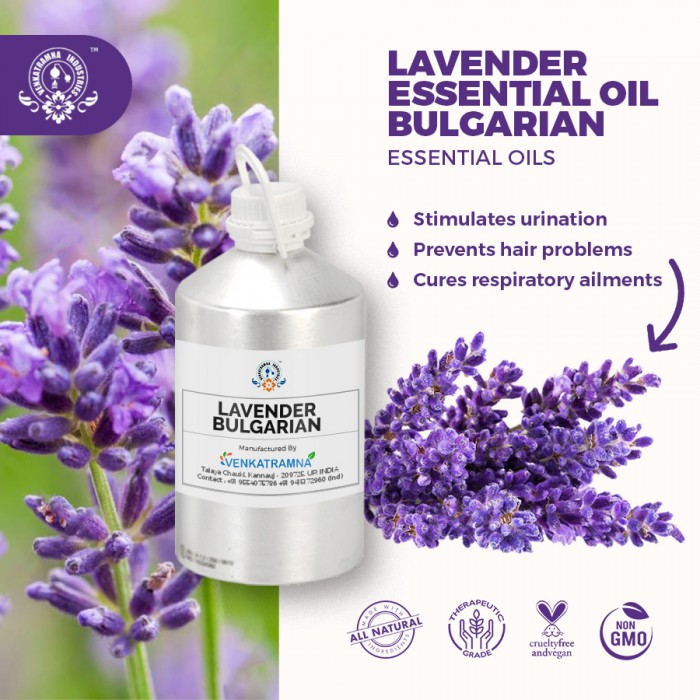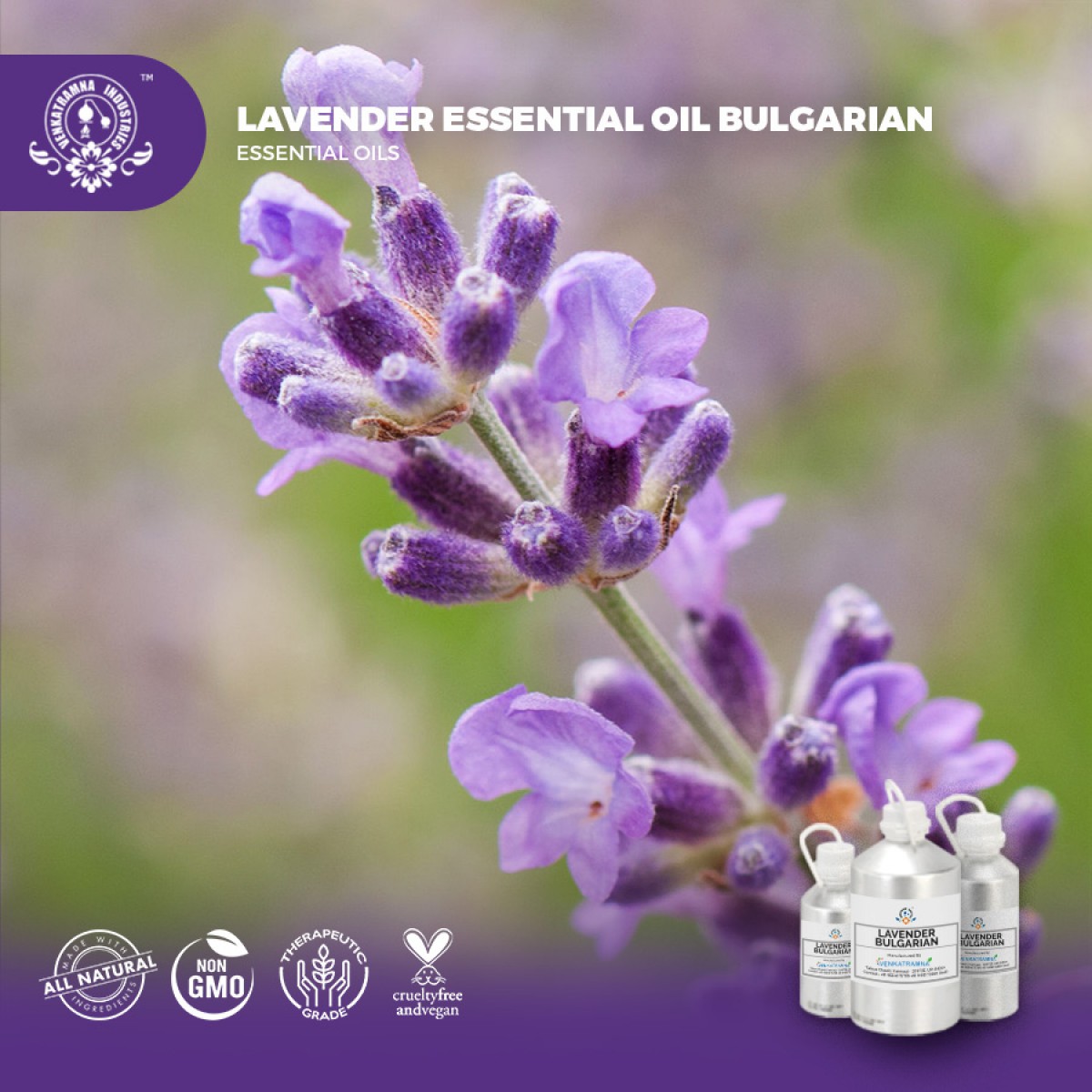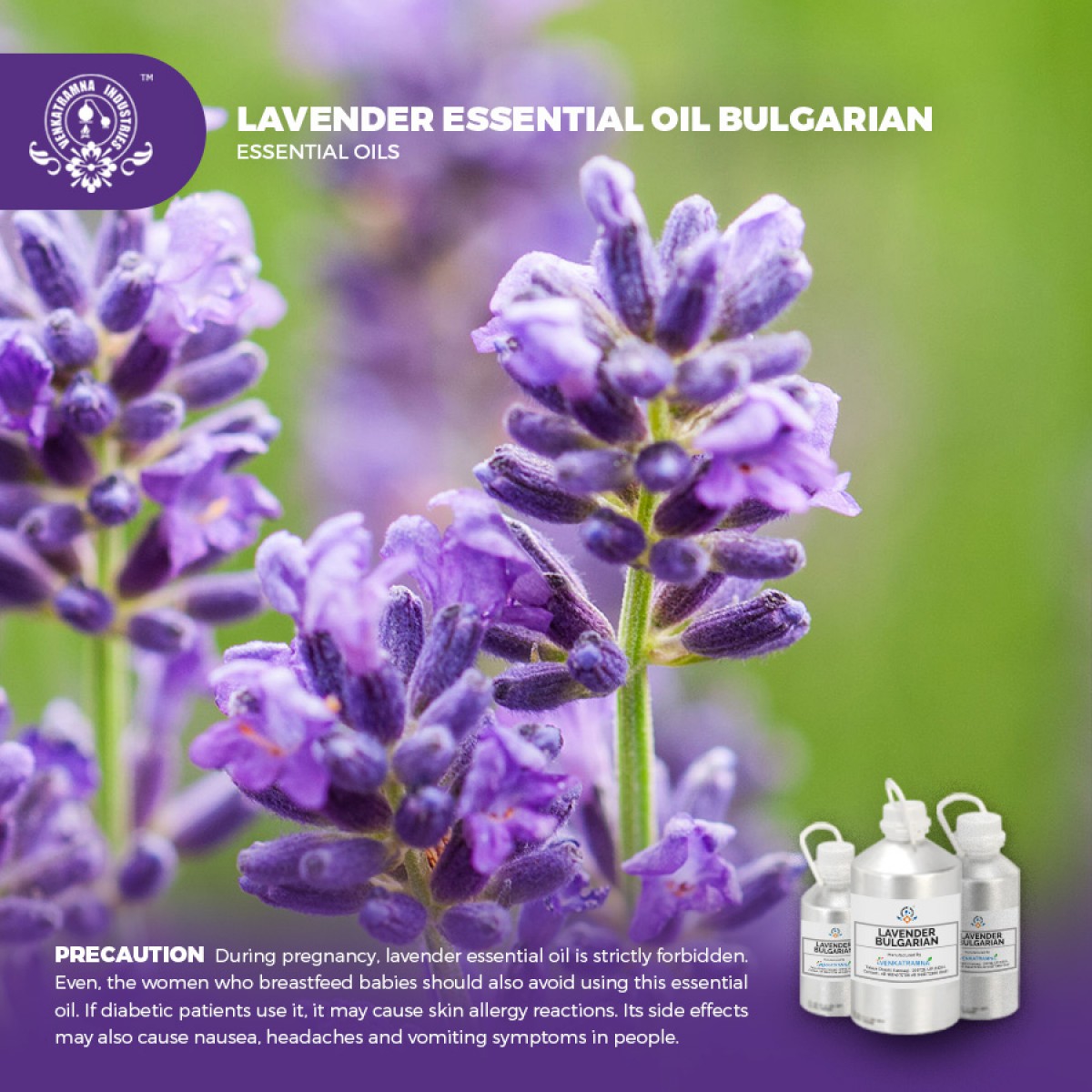Botanical Name: Lavandula angustifolia Common name: Lavander Plant fa Read More
|
Botanical Name: |
Lavandula angustifolia |
|
Common name: |
Lavander |
|
Plant family: |
Lamiaceae |
|
Genus: |
Lavandula |
|
Appearance/Color: |
A thin, clear,
pale yellow liquid. |
|
Odor: |
Having a strong aroma,
it secures it place in topnotch aroma category. The lavender essential oil is
filled with rich floral fragrance which is somewhere fruity in smell. |
|
Blends With: |
Citronella,
Chamomile, Jasmine, Bay, Geranium, Mandarin, Palmarosa, Thyme, Orange,
Rosemary, Lemon, Rosewood, Bergamot, Clary Sage, etc. |
|
Origin: |
Bulgaria |
|
Source: |
Flower |
|
Method of
Extraction: |
Steam Distillation |
Lavender oil is extracted from
the lavender flowers. It is derived primarily using the steam distillation
process. Lavender is highly-fragrant so have been widely used to produce
potpourri for many years. Lavender essential oil prepared by keeping quality
and 100% purity in mind which make it useful to formulate perfumes.
We provide our customers with pure and finest quality Bulgarian Lavender Essential Oils in India.
DISCLAIMER
The complete range of conditions
or methods of use are beyond our control therefore we do not assume any
responsibility and expressly disclaim any liability for any use of this
product. Information contained herein is believed to be true and accurate however,
all statements or suggestions are made without warranty, expressed or implied,
regarding accuracy of the information, the hazards connected with the use of
the material or the results to be obtained from the use thereof. Compliance
with all applicable federal, state, and local laws and local regulations
remains the responsibility of the user.
The FDA has not evaluated the
statements on this website. No claims are made by Venkatramna Industries as to
the medicinal value of any products from vriaroma.com or by us. The information
presented here is for educating our customers about the traditional uses of
essential oils and is not intended to diagnose, treat, cure, or prevent any
disease. You are responsible for understanding the safe application of these products.
If you have any questions, please call or email us for further information.
As per NAHA guidelines, New Directions Aromatics
(NDA) does not recommend the ingestion of essential oils. It is imperative to
consult a medical practitioner before using Essential Oils for therapeutic
purposes. Pregnant and nursing women and those taking prescription drugs are
especially advised not to use this product without the medical advice of a
physician. The oil should always be stored in an area that is inaccessible to
children, especially those under the age of 7.
Lavender essential oil Bulgarian has wide arena of applications
find a great scope in medicinal and aromatherapy sectors. It
is particularly effective for bronchitis, sinusitis and otitis. People
often consume lavender oil to cure, inflammation, headache and skin allergies.
Due to the presence of two major
naturally occurring components Linalool and Linalyl acetate, the oil is
well-used as a therapeutic product. It
has rich antiseptic properties that can treat wounds.
It is an analgesic reduce pain and inflammation. Whether it’s pain in the
muscles or joints, toothache, headache, coughs, colds or
fevers, Lavandin Oil provides natural pain relief for your ailments.
Lavandin Oil acts as a tonic for the nerves and the nervous system,
strengthening and activating it.
Its
intoxicating aroma can effectively boost self-esteem, confidence, hope and
mental strength, working together to combat symptoms of depression.
COMMON
USAGE
·
Repels bugs
·
Propels sleep
·
Provides relief from anxiety
·
Acts as stress-buster
·
Treats acne
·
Helps relieve aches
·
Stimulates urination
·
Prevents hair problems
·
Cures respiratory ailments
·
Prevents cancer
·
Improves immunity
·
Treats Eczema
·
Promotes blood circulation
·
Assists in digestion
Ingredients:
|
S.No |
Key Constituents |
Strength (%) |
|
1 |
Linalyl acetate |
46.6 (30–42) |
|
2 |
Linalool |
27.1(22–34) |
|
3 |
(Z)-?-Ocimene |
5.5(3–9) |
|
4 |
Lavandulyl acetate |
4.7 (2–5) |
|
5 |
Terpinen-4-ol |
4.6 (2–5) |
|
6 |
?-Caryophyllene |
4.1 |
|
7 |
(?)-?-Farnesene |
2.4 |
|
8 |
(E)-?-Ocimene |
2.2(2–5) |
|
9 |
3-Octanyl acetate |
1.1 |
Safety summary
·
Caution: During pregnancy, lavender
essential oil is strictly forbidden. Even, the women who breastfeed babies
should also avoid using this essential oil. If diabetic patients use it, it may
cause skin allergy reactions. Its side effects may also cause nausea, headaches
and vomiting symptoms in people
Systemic effects
·
Acute toxicity: The acute oral
LD50 of lavender oil-rat > 5 g/kg body weight.
·
Skin corrosion / irritation: may cause
skin irritation
·
Respiratory or skin sensitization: No
significant effects or critical hazards
·
germ cell mutagenicity: No significant
effects or critical hazards
·
Carcinogenicity Data: None of the
components of this material are listed as a carcinogen.
·
Reproductive Toxicity: No adverse effects
on reproduction are known.
·
Chronic Toxicity: May cause allergic
reactions on skin
·
Ecotoxicity: Harmful to aquatic life. May have
long lasting effects.
·
Bioaccumulation: No data available
·
Mobility in soil: No data available
·
Persistence and degradability: No data available
·
PBT and vPvB assessment: No data available
·
Avoid direct exposure into water streams and
ground water sources.





 MSDS-Lavender3.pdf
MSDS-Lavender3.pdf




